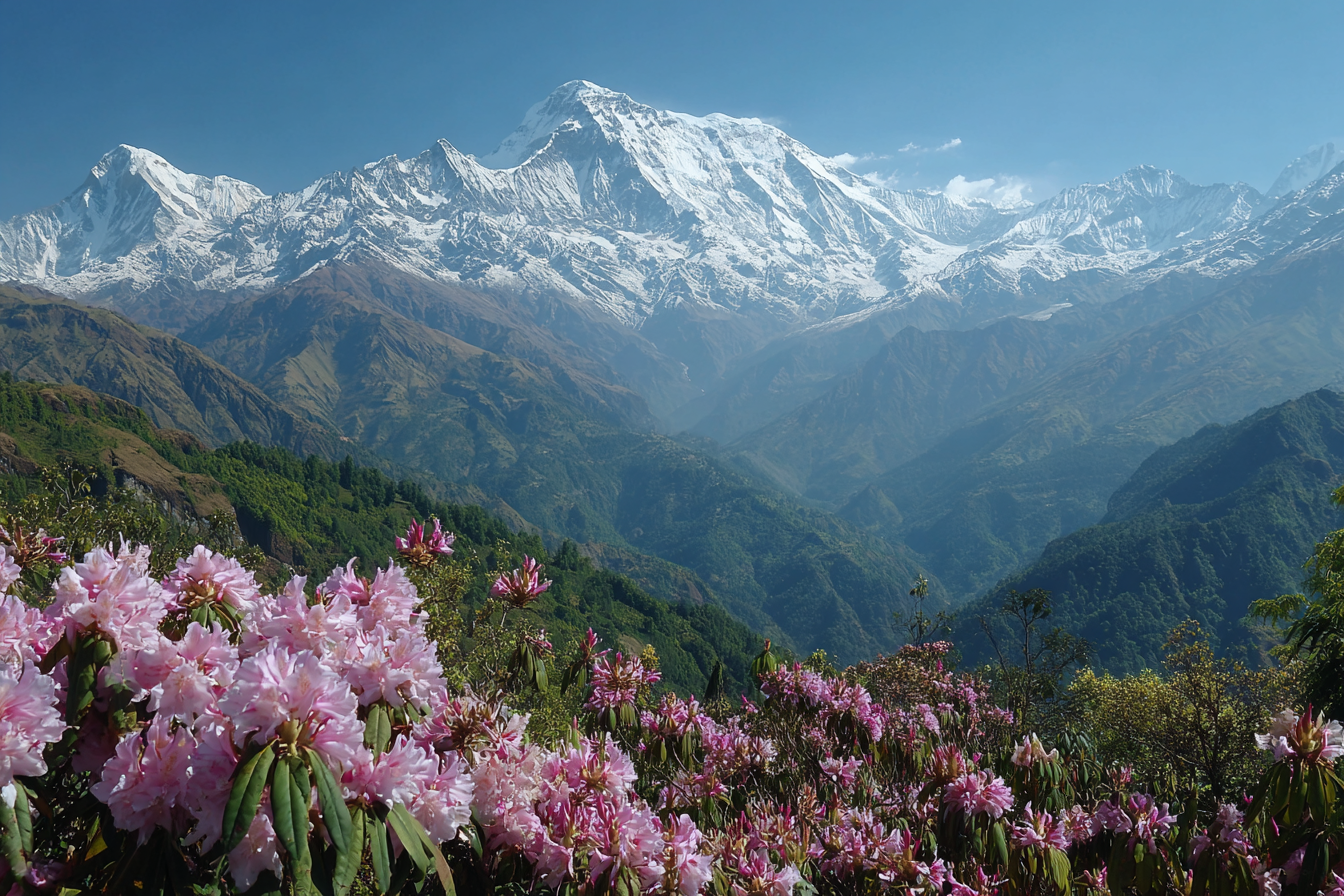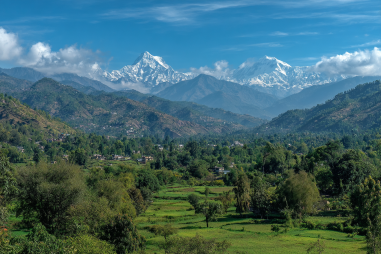Trekking to Annapurna Base Camp (ABC) is a dream for many adventure seekers, but success on this breathtaking journey relies heavily on understanding the weather conditions you’ll encounter along the way. The Annapurna region’s diverse climate zones and rapidly changing weather patterns can either enhance your experience or add unexpected challenges. Whether you’re a first-time trekker or a seasoned mountaineer, knowing when to plan your trek and how to prepare for the weather is key to enjoying the stunning landscapes, vibrant culture, and the thrill of the trail.
Overview of Annapurna Base Camp Climate Zones
The Annapurna trek covers a wide range of altitudes, which means you’ll pass through multiple climate zones during your journey. Starting from lower elevations around 800 meters (2,624 feet) in towns like Nayapul, you move through subtropical, temperate, and alpine zones before reaching Annapurna Base Camp at approximately 4,130 meters (13,550 feet).
At the base of the trail, the climate is relatively warm and humid, supporting lush forests and rich biodiversity. As you ascend, temperatures gradually drop and the air thins. The temperate zone around 1,500 to 3,000 meters features rhododendron forests and cooler weather. Above 3,000 meters, the alpine zone offers stark rocky landscapes, sparse vegetation, and much colder conditions, especially at night. Understanding these zones helps trekkers pack appropriately and anticipate the types of weather to expect throughout the trek.
Seasonal Weather Patterns: Spring, Summer, Autumn, Winter
Each season brings a unique set of weather conditions that impact trekking in the Annapurna region.
Spring (March to May)
Spring is considered one of the best times to trek to Annapurna Base Camp. During this season, the weather gradually warms up, and the trails come alive with blooming rhododendrons and vibrant flora. Daytime temperatures range from mild to warm at lower altitudes, while nights remain chilly higher up. The skies are generally clear, offering amazing mountain views, though there can occasionally be light showers as the season progresses.
Summer (June to August)
Summer corresponds with the monsoon season in Nepal. Beginning in June and lasting through August, heavy rainfall is frequent. The rain nourishes the forests but also causes slippery, muddy trails, landslides, and reduced visibility in the mountains. High humidity can make trekking uncomfortable, especially at lower elevations. Additionally, frequent rain increases the risk of trail closures and complicates logistics. For these reasons, trekking during the monsoon is less popular among visitors.
Autumn (September to November)
Autumn is arguably the peak trekking season in Annapurna. The monsoon rains end in September, leaving behind clear skies, stable weather, and cool temperatures. During this period, the air is crisp and dry, providing some of the best visibility of the towering Annapurna range. Daytime temperatures are moderate, and nights are cool but not extreme. This time of year hosts many trekkers who come for the beauty of the landscapes combined with manageable weather conditions.
Winter (December to February)
Winter brings cold temperatures and snow, especially at higher altitudes. While the lower parts of the trail remain accessible, nights become very cold, sometimes dropping below freezing even at moderate elevations. Snowfall can cover the upper sections of the trek, including Annapurna Base Camp itself, which may cause trail closures or require additional gear such as crampons. Despite the cold, winter trekking offers solitude and clear air, but it is recommended for experienced hikers prepared for harsh conditions.
Impact of Weather on Trekking Conditions
The weather greatly influences both the physical challenges you’ll face and the overall safety of your Annapurna Base Camp trek. During the wet monsoon months, trails can quickly turn muddy and treacherous, increasing the risk of slips and falls. Landslides are a serious hazard that can cause delays or force route changes. Strong winds and cold temperatures at higher altitudes during winter can lead to hypothermia if proper precautions aren’t taken.
Clear skies in the spring and autumn seasons enhance visibility, making navigation easier and the mountain views spectacular. However, sudden weather changes are always possible in mountainous terrain. Afternoon storms, high winds, or thick fog can develop quickly, so trekkers must be prepared for sudden shifts. Understanding the typical weather conditions during each season helps you anticipate challenges and prevents surprises on the trail.
Best Months to Visit for Ideal Weather
For most trekkers aiming to balance enjoyment, safety, and favorable weather, the optimal months to trek to Annapurna Base Camp are in the spring (March to May) and autumn (September to November). These windows offer the best combination of comfortable temperatures, clear skies, and stable weather.
The spring season boasts vibrant rhododendron blooms and warming temperatures after winter. It is ideal for those especially interested in the flora and wildlife of the region. Meanwhile, autumn is favored for crystal-clear mountain views and moderate daytime temperatures, making it a very popular trekking period. These seasons avoid the heavy monsoon rains and extreme winter cold, allowing trekking with minimum weather-related disruptions.
Packing Tips Based on Weather Forecasts
Packing smartly for Annapurna Base Camp is essential given the variable weather conditions you’ll encounter. Here are some tailored tips to consider based on the season:
- Spring: Pack layers to adapt to warm days and chilly nights. Include a lightweight down jacket, moisture-wicking base layers, a waterproof jacket for occasional rain, trekking poles, and sturdy boots.
- Summer (Monsoon): Waterproof gear is critical—bring a reliable rain jacket and rain pants, quick-drying clothing, water-resistant backpack covers, and sturdy but slip-resistant footwear.
- Autumn: Similar to spring, layering is key. Prepare for cold mornings and evenings, and carry sunglasses and sunscreen to protect from intense sunlight at high altitude.
- Winter: Invest in thermal underlayers, insulated jackets, gloves, windproof outerwear, a warm hat, and possibly trekking gear suitable for snow and ice like crampons or gaiters.
Regardless of season, don’t forget essentials like a hat, sunscreen, sunglasses, a reliable water bottle, and a first aid kit. Checking recent weather forecasts close to your departure date helps fine-tune your packing list.
How to Handle Sudden Weather Changes
Mountains are known for unpredictable weather, and Annapurna Base Camp is no exception. Even on clear days, weather conditions can deteriorate quickly, so it’s important to stay vigilant and ready to adjust plans.
- Always carry a fully charged mobile phone or communication device to check real-time weather updates and call for help if needed.
- Keep waterproof layers and a warm jacket easily accessible in your daypack to respond immediately to rain or cold wind.
- Start your daily trek early to avoid afternoon thunderstorms, which are common in spring and autumn.
- Listen to advice from local guides and porters, as they have deep knowledge of weather patterns and trail conditions.
- If you encounter snow or thick fog, slow down, maintain close group contact, and turn back if visibility becomes dangerously low.
Weather-Related Trail Closures and Safety
Safety is the top priority on any trek. During monsoon season, landslides or river floods can force temporary trail closures, and in winter, heavy snowfall may block paths leading to Annapurna Base Camp. Local authorities and trekking agencies closely monitor conditions and will close trails if they are deemed unsafe.
It’s crucial to stay informed through multiple sources and respect trail closures or detours. Attempting to push forward despite warnings can result in accidents or stranded situations. Hiring an experienced local guide not only enriches your cultural and trekking experience but also provides an added layer of safety and weather insight.
Local Weather Resources and Forecasts
To prepare effectively, use reliable weather resources to monitor conditions before and during your trek. Some useful resources include:
- Nepal Meteorological Department: Offers official weather updates and forecasts for regions around Annapurna.
- Mountain-based weather apps: Apps like Mountain Forecast provide altitude-specific weather reports.
- Local trekking agencies and guesthouses: They often have firsthand knowledge of daily weather and trail conditions.
- Social media and trekking forums: Updates and advice from recent trekkers can offer valuable real-time insights.
Cross-referencing multiple sources helps build a comprehensive picture of the expected weather and helps you make informed decisions on timing and preparedness.
Planning Your Trek for the Best Weather Experience
Understanding and respecting Annapurna Base Camp’s weather conditions is essential for a rewarding trekking experience. By aligning your trip with the spring or autumn seasons, carefully packing for expected conditions, and staying adaptable to sudden changes, you maximize your chances of enjoying the stunning Himalayan scenery in safety and comfort.
Regardless of when you go, always prioritize safety by monitoring weather forecasts, traveling with experienced guides, and being prepared to adjust your plans. With the right knowledge and planning, your Annapurna Base Camp trek will be a memorable adventure filled with breathtaking views, natural beauty, and personal achievement.







